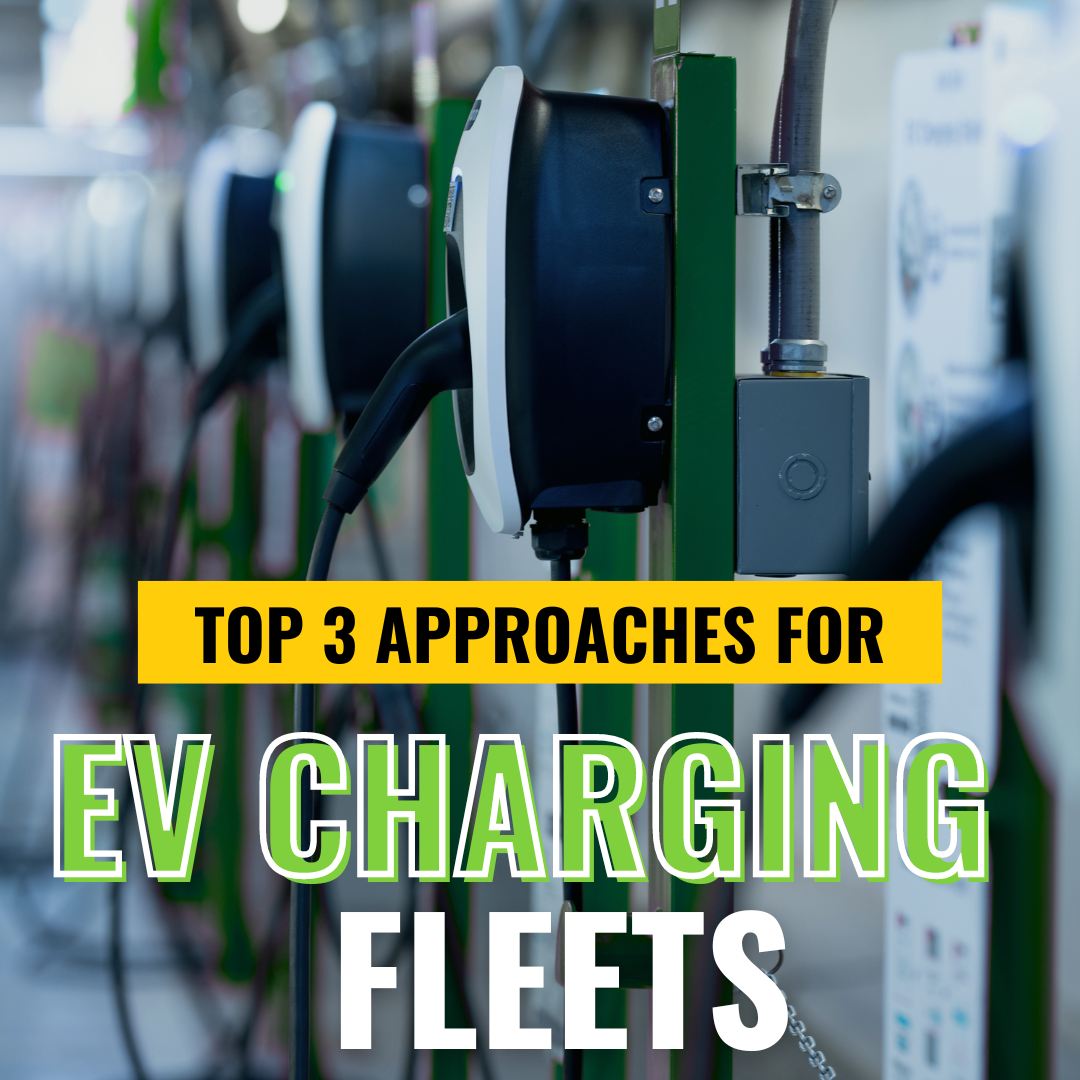We use cookies to make your experience better. To comply with the new e-Privacy directive, we need to ask for your consent to set the cookies. Learn more.
EV Charging for Fleets: Top 3 Approaches
The economics of fleet electrification boil down to one simple fact: Electricity is cheaper than petroleum. In 2022, $5.14 worth of electricity would power 100 miles of EV range in the U.S. To get the same mileage from gas, you’d spend $14.08. Diesel typically costs even more.

That’s probably a big reason 86% of surveyed C-suite executives said they were interested in fleet electrification. Maybe you share that interest. But before you can replace delivery trucks or work vans with EVs, you need a plan to keep your fleet powered up.
With that in mind, here are the three most common ways to handle EV charging for fleets.
3 Approaches to EV Fleet Charging Infrastructure
Every EV fleet is different, and your charging needs will depend on the particulars: What type of vehicles you operate, how often you use them, the state of your local power grid. Generally, however, companies making the transition to EVs currently use some combination of the following three strategies:
1. Level 1 charging through standard power outlets.
The simplest way to charge fleet EVs is through your facility’s existing power system. Level 1 EV charging powers up a vehicle battery through standard 120 volt, AC outlets. All you need is a portable charging unit. These items cost a lot less than a hard-wired Level 2 or fast-charge unit, and they’re easy to replace as needed.
Unfortunately, Level 1 charging is only a solution for light-duty vehicles with relatively infrequent usage. It can take up to 50 hours to charge an electric car from a standard outlet. And, of course, you should check with your local utility company if you plan to keep multiple vehicles charging 24/7 through your facility’s electric grid.
2. Decentralized EV charging for fleets.
There’s another option for EV fleet charging on existing infrastructure: You might be able to use public charging stations along with home EV chargers. Both options have the advantage of being immediately available, but they also come with downsides.
Public charging stations offer Level 2 chargers, which add up to 25 miles of EV range per hour of charging. They might also offer DC fast charge (DCFC) units, which can take an EV battery from 0 to 80 percent in as little as 20 minutes.
You may pay per hour or minute, you may pay by the kilowatt-hour, or you might even find chargers that are free to use. But before you depend on public chargers alone, make sure your area has the capacity to support your fleet — without monopolizing the infrastructure and frustrating other EV owners.
You may be able to get additional charge capacity by using your employees’ home chargers. According to Electrical Contractor, charging EVs at home can cost up to 60% less than using commercial EV chargers. You just have to find a way to reimburse (or even pay) employees for their costs.
Through a combination of home and public EV chargers, you can create a decentralized charging network that supports a modest EV fleet. However, larger fleets are best off investing in their own EV fleet charging infrastructure.
3. Building your own fleet EV charging stations.
The most reliable approach to EV charging for fleets is to install your own bank of company chargers. With a depot full of Level 2 and DCFC chargers, planned for your exact fleet needs, you can control costs and ensure vehicles are always available when you need them.
Generally, Level 2 chargers cost less to build and maintain than their DCFC counterparts. Most facilities get the best results from a mixture of these technologies — along with Level 1 charging in a pinch.
The good news is that it’s often possible to add Level 2 EV chargers to your existing fleet depot, sparing the considerable cost of a new facility. An EV Charger Pedestal from Solus Group supports up to two EV chargers on a single, compact unit. Charging stations built on these stands have limited space requirements, so they’re likely to fit neatly into your existing facility.
While they don’t take up much space, EV Charging Pedestals provide dependable protection for EV charging equipment. That’s especially true if you opt for EV Charger Pedestal and Cable Management Kits, which store chargers and lift charging cables out of harm’s way between uses.
For more information about equipment that supports EV charging for fleets, contact Solus Group at 314-696-0200 today.
